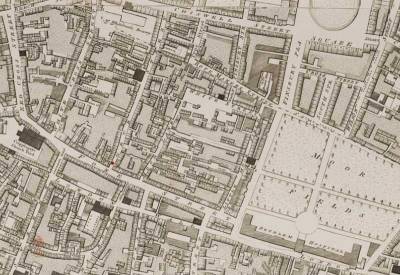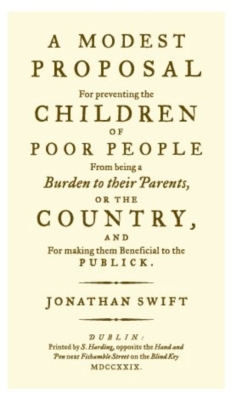In my absolute favourite Coetzee book, Diary of a Bad Year, the mysterious Señor C has no doubts about calling his collection of fragments an thoughts Strong Opinions. “The book itself is the brainchild of a publisher in Germany,” he explains to Anya, his soon-to-be-typist. “Its title will be Strong Opinions. The plan is for six contributors from various countries to say their say on any subjects they choose, the more contentious the better. Six eminent writers pronounce what is wrong with today’s world.”
But as the book progresses, Señor C finds his hard and firmly-fixed opinions wavering slightly (is it the influence of Anya? A softening ‘woman’s touch’? Does he really believe what he says, does he really have the right to ‘pronounce’ on anything?), and even the editor himself vacillates about the title — “He is still wavering between calling these little excursions Meinungen or Ansichten. Meinungen are opinions, he says, but opinions subject to fluctuations of mood. The Meinungen I held yesterday are not necessarily the Meinungen I hold today. Ansichten, by contrast, are firmer, more thought out. In our last communication he was tending to prefer Meinungen. Six different writers, six different personalities, he says: how can we be sure how firmly wedded each writer is to his opinions? Best to leave the question open.”
Words like Meinungen and Ansichten that trickle down to us English-speakers from other tongues are wonderful, because they’re layered with shades of meaning in a single compressed word — whereas English often tends to need two, three, four words to express the same thing. Strong opinions; soft opinions — in the final analysis, the book does not offer a judgement on which might be preferable from an ethical standpoint. (After all, when did Coetzee’s books ever offer an answer? But there’s a clue in that itself; their very refusal to decide one way or the other seems to me a way of saying that soft opinions are better in a world where nobody can really speak with authority.)
What Coetzee has never shied from saying unequivocally, however, is that strong or soft or hard or weak, opinions have a right to be held and freely expressed. In 1996 a selection of essays and interviews was published called Giving Offense: Essays on Censorship, in which Coetzee examined the nature of censorship, the ethics of ‘giving offense’, the effect of censorship on art and writing, and so on and so forth. Growing up in Apartheid-era South Africa meant knowing all too well what it means to live under apparatuses that stifle expression and regulate thought. In the very first essay of the book (‘Taking Offense’), Coetzee romps through the various forms censorship can take (regulation for moral, religious, or political reasons; internalized censorship, institutionalized censorship) and the psychology behind ‘offending’ and ‘censoring’ respectively. Taking offense always has powerlessness at the heart of the matter, because censorship – not believing in the inherent power of certain representations to win out over others – springs out of the need to limit what is represented — and therein is its de facto admission of doubt. But there is one particularly interesting point at which Coetzee looks at Mill – and draws an important distinction:
To Mill, freedom of speech includes immunity from censorship, specifically from prepublication censorship, but also freedom from societal pressures, “the tyranny of the prevailing opinion and feeling”. Mill conflates censorship with social pressures (sometimes called censure) in ways I am reluctant to follow. Censure, as Frederick Schauer points out, is not strictly speaking a free-speech issue. Social intolerance is different in kind from official sanctions back by the force of law: people have a choice not to follow orthodoxy. – Giving Offense: Essays on Censorship, J. M. Coetzee
He does not pursue this line of examination further in his essay; but I think I will, here, because it’s important right now more than ever in the wake of what happened in Paris last week, and in light of the way the world has reacted.
The shootings were rightly met with unequivocal condemnation and horror: to be gunned down like that because you took up a pen, a pencil, to draw some pictures — well, if it was not true and horrible, then it would have been unthinkable and ludicrous. That it was an attempt to silence and censor taken to its very fanatical extreme is also undeniable, and the event has rightly become a reiterated defence of an intrinsic and basic freedom that I believe in, the freedom of speech. I say all this now because words (like any representation) are vulnerable things, perpetually exposed to the possibility of misunderstandings, misreadings, misinterpretations, and can cause a great deal of anger in their own way; it’s important to be absolutely clear that the shootings were terrible, that the shooters were terrible, and that the deaths of 17 people is incredibly tragic (any death is and it’s no different in this case).
But a rejection of censorship does not constitute an inability to censure and question and doubt (I prefer soft opinions myself, both to hold and in others), and this is what interests me now; a society that defends so loudly the right for anybody to hold and express any opinion, any thing, should be the very last to stop thinking about what the opinions themselves really mean.
To me, Coetzee’s words above on the distinction between ‘censor’ and ‘censure’ echo those of Teju Cole published in the New Yorker just last week, in what I thought was one of the best pieces on the whole Charlie Hebdo situation ever written; Cole writes about ‘Unmournable Bodies‘ in the context of very mournable ones, and in the aftermath of a veritable media frenzy over the attacks; he says,
But it is possible to defend the right to obscene and racist speech without promoting or sponsoring the content of that speech. It is possible to approve of sacrilege without endorsing racism. And it is possible to consider Islamophobia immoral without wishing it illegal. Moments of grief neither rob us of our complexity nor absolve us of the responsibility of making distinctions.
On the one hand, I see the media frenzy as understandable — I can even empathize with it. In an age where the adage “the pen is mightier than the sword” has been repeatedly disproven and holds not much currency, the events in Paris came as a stark reminder that pens and pencils – though not, ultimately, any defence against guns – have not lost all their potency. There is a perverse kind of reaffirmation for those who write, draw, create and comment in all this – our words do matter; they do have power; and ideally, let’s use that power to do good and make the world a better place. (Generally this has always been the idea; no writer or artist has ever sat down with pen in hand to consciously try and make the world a worse place, regardless of how divorced the effects may be from the intent.) A slew of cartoons came out after the incident depicting pens and pencils doing all sorts of glorious things — from resisting to tyranny to creating harmony; terrorists cower in fear at the sight of a small pencil. Of course they are meant to highlight the ridiculousness of what happened, and of those who held the guns — how can you possibly kill for something like this? — but at the same time there’s no looking at any of these without remembering the above-mentioned idiom.
But on the other hand, Cole’s piece was a refreshing and welcome reminder that rejecting censorship and defending free speech does not mean we have to celebrate all that is said and done in the name of free speech. Papers such as the New York Times and the Guardian have taken a beating over the past week for refusing to publish some of the Charlie Hebdo cartoons themselves — they have been called ‘cowardly’ and accused of failing to safeguard free speech. But such accusations are mistaken, and stem from that confused idea that we have to echo the views of others in order to defend their right to hold them; this is not true. The NY Times and the Guardian can very well defend the right to free speech while disclaiming their willingness to depict some of the things Charlie Hebdo did. In doing so they’re simply reiterating that they do not hold such views; not that others should not. This is a point everyone should be questioning: of course anybody can hold and express whatever they want, but can’t we query and critique those views too?
Although Charlie Hebdo calls itself a ‘satirical’ magazine, I saw some of the ‘contentious’ cartoons they had published and saw nothing satirical about them; they are acts of defiance plain and simple – we will draw this in defiance of your injunction not to draw this. That is worthy of defending in itself, of course, in the name of free speech; but it is not tantamount to constituting a constructive social critique of anything. If reading piles of 18th century satirical fiction and treatises on the nature and purpose of satire has taught me anything, then that is what satire does — and the 18th century is not a bad place to look to if we want to remind ourselves of satire’s function in society and the media; Swift and Pope are not bad masters to learn from. “Satire is a sort of glass…” Swift began once — and it is crucial to remember this. Satire deals with the real and the current; it magnifies real absurdities and so of course there is mockery — but there is also an urging towards some sort of political or social change. Without this key ingredient, what intends to be ‘satire’ becomes simply mockery, and while we can defend anyone’s right to mock in a free society, I would value the two things somewhat different. It is important to remember the distinction between the two (satire and mockery) for this reason alone.
Am I Charlie? No — for one, the battle for free speech – though it seems axiomatic in most developed Western societies — is actually very far from won, either in those places very explicit about their control of the press and media or not (and this is true even of the ‘developed Western societies’; I can say there might certainly be degrees of freedom around speech, but is it absolute anywhere? I’m not sure!). For another, I don’t know if I’d particularly like to be — satire I can get behind; but mockery? It’s not for me. It can be for others; mockery is certainly not to be censored (as nothing should be), but it’s not beyond censure in its own way.




